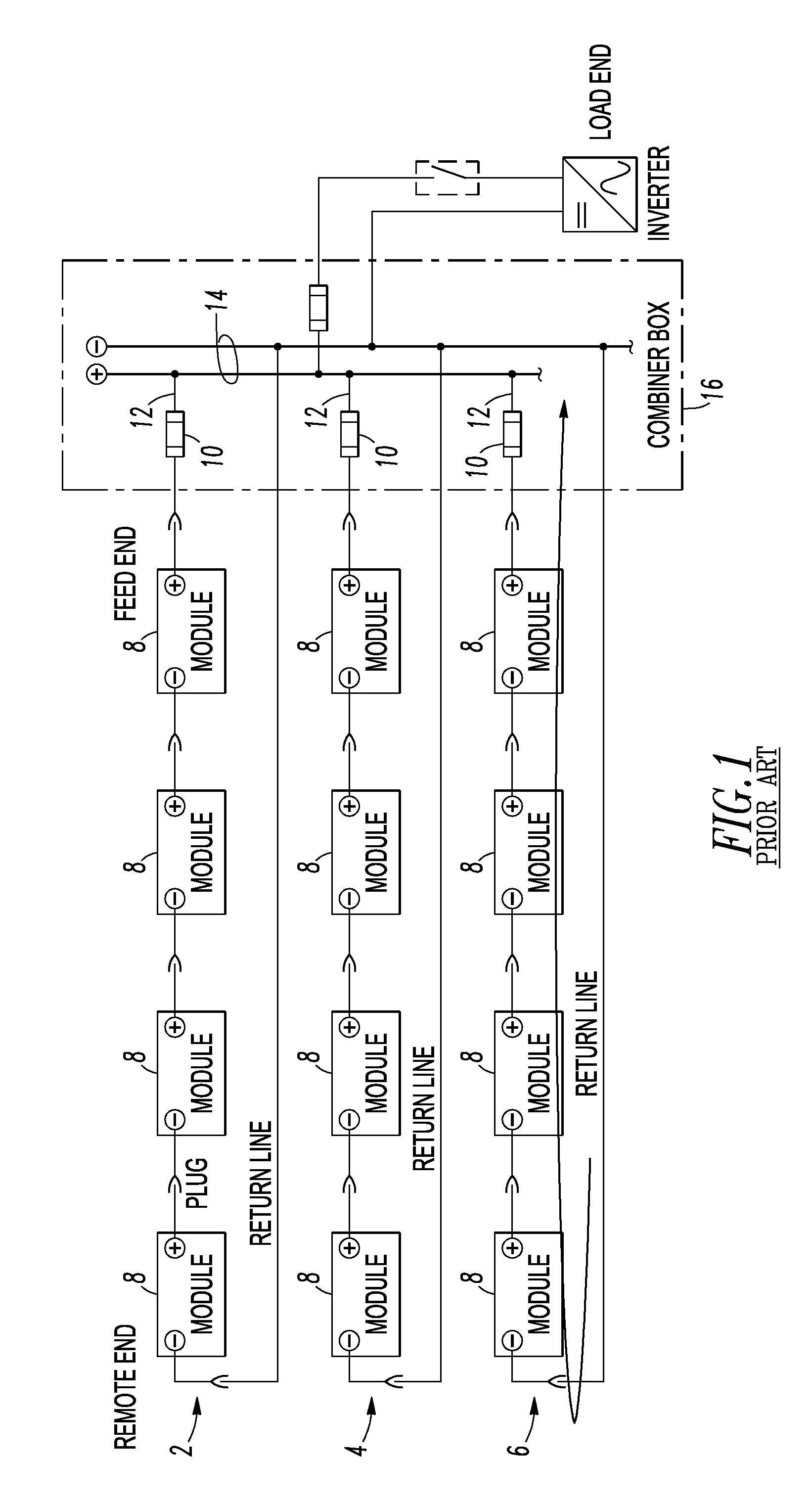String and system employing direct current electrical generating modules and a number of string protectors
- Summary
- Abstract
- Description
- Claims
- Application Information
AI Technical Summary
Benefits of technology
Problems solved by technology
Method used
Image
Examples
example 1
[0072]An example string 90 includes a plurality of direct current (DC) electrical generating modules (EGMs) 8 (shown as modules in FIG. 3) electrically connected in series to form a first end 92 and a remote second end 94, a power line 96 electrically connected to one of the DC EGMs 8 at the first end 92, a return line 98 electrically connected to another one of the DC EGMs 8 at the remote second end 94, and a SP 100 (e.g., without limitation, AFCI) in the return line 98 of the string 90. As will be described, below, in connection with FIG. 7, the SP 100 includes a number of an over current protector, an arc fault protector, a reverse current protector and a ground fault protector.
[0073]In this example, an SP 99 (e.g., without limitation, AFCI) (shown in phantom line drawing) in the power line 96 of the string 90 is not required for in-circuit (series) only faults. Preferably, a diode 101 is disposed in the power line 96 at the first end 92 of the string 90. This eliminates the need...
example 2
[0074]The example SP 100 is structured to monitor or report current flowing in the power line 96 of the string 90. For example, as shown in FIG. 7, the example SP 100 includes a current sensor 102, an analog front end 104 and a processor 106 (e.g., without limitation, microprocessor) that monitors the sensed string current 108 and reports the same (e.g., without limitation, through communication port 110). The processor 106 includes a number (e.g., one, some or all) of an over current protector routine 112, an arc fault protector routine 114, a reverse current protector routine 116 and a ground fault protector routine 118.
[0075]A non-limiting example of DC arc fault detection and protection for the routine 114 is disclosed by U.S. Pat. No. 6,577,138, which is incorporated by reference herein.
[0076]If DC ground fault protection is employed, then, for example and without limitation, a current sensor 102′ and an analog front end 104′ provide a string return current 108′ to the processo...
example 3
[0077]The example SP 100 (FIG. 3) is located at the remote second end 94 of the string 90 with one of the DC EGMs 8. This SP 100 can advantageously be employed for retrofit applications, such that an electrician does not have to go into a combiner box (e.g., 24 of FIGS. 2A-2C) to install a protective device or rewire. Instead, the electrician simply installs (e.g., without limitation, plugs-in) the SP 100 at the last DC EGM 8 (with respect to FIG. 3, at the left of the string 90).
PUM
 Login to View More
Login to View More Abstract
Description
Claims
Application Information
 Login to View More
Login to View More - R&D
- Intellectual Property
- Life Sciences
- Materials
- Tech Scout
- Unparalleled Data Quality
- Higher Quality Content
- 60% Fewer Hallucinations
Browse by: Latest US Patents, China's latest patents, Technical Efficacy Thesaurus, Application Domain, Technology Topic, Popular Technical Reports.
© 2025 PatSnap. All rights reserved.Legal|Privacy policy|Modern Slavery Act Transparency Statement|Sitemap|About US| Contact US: help@patsnap.com



